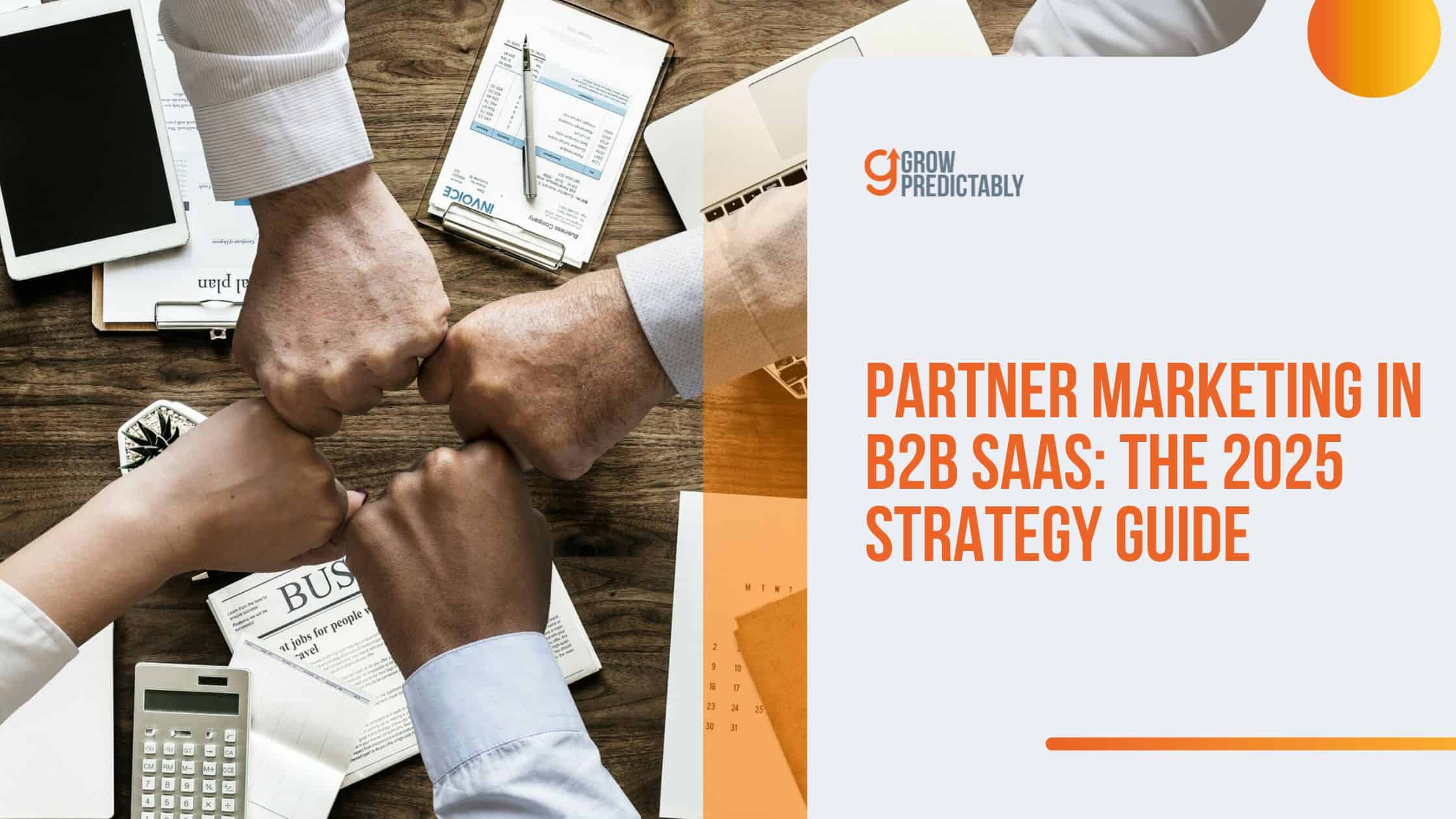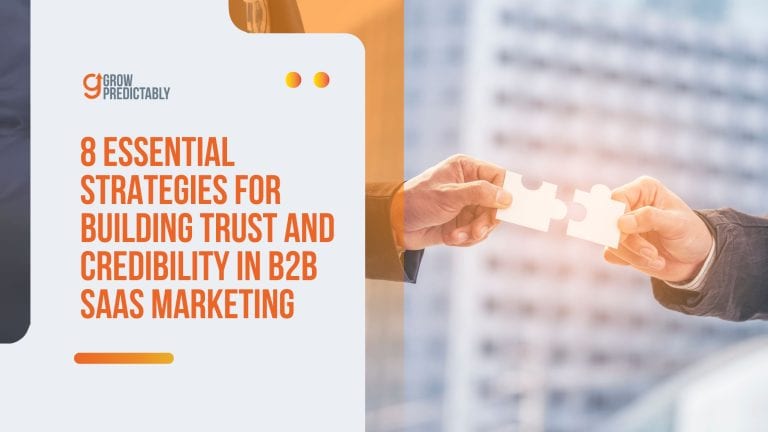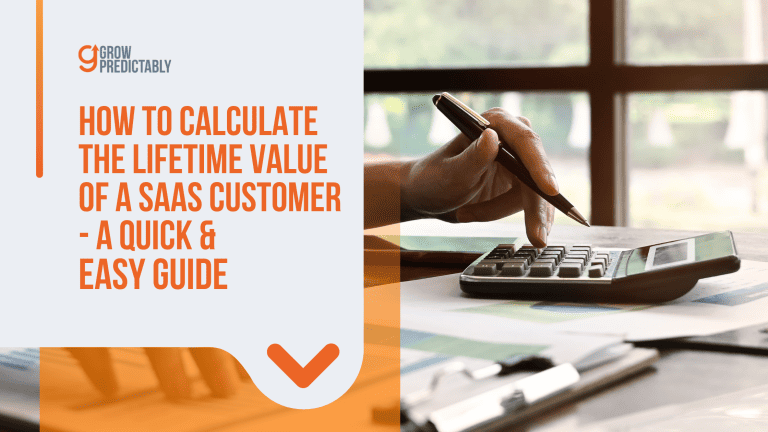Partner Marketing in B2B SaaS: The 2025 Strategy Guide
I get it—partner marketing sounds great until you hit the execution wall.
Finding the right partners, avoiding wasted time, and creating wins for both sides is hard.
But when you crack it, the growth is ridiculous.
Think 6x more revenue.
Here’s exactly what works (and what doesn’t) in partner marketing for B2B SaaS.
Let’s strip away the theory and get to strategies that deliver real results.
Ready?
Understanding Partner Marketing in B2B SaaS
Did you know that 96% of B2B leaders expect to increase revenue directly attributed to their partner ecosystems?
That’s because partner marketing packs a serious punch in the SaaS world.
SaaS partner programs in B2B SaaS are strategic alliances where two or more companies join forces to boost each other’s growth.
Think of it as a business friendship with benefits – you share resources, audiences, and opportunities to create bigger wins, enhance brand exposure, and generate leads.
SaaS partner programs are essential frameworks that help B2B businesses select the right partners and provide resources to affiliates to promote and sell SaaS products effectively.
Here’s what makes it tick:
- Co-marketing campaigns: Team up with complementary SaaS tools to create joint webinars, ebooks, or case studies
- Integration partnerships: Build direct product connections to solve customer problems better
- Referral programs: Set up structured systems where partners send qualified leads your way
- Channel partnerships: Let other companies sell your product while you focus on making it better
The magic happens when you pick partners that fit like puzzle pieces with your product.
For example, a project management tool might partner with a time-tracking app – both serve similar customers but don’t compete directly.
Smart partner marketing isn’t about random handshakes.
It’s about finding companies that share your target audience but offer different solutions.
This way, you’re not just reaching more people – you’re reaching the right people who are already primed to need what you’re selling.
Time to turn these partnerships into real business results.
In our next section, we’ll break down exactly how to choose the right partners and build programs that actually work.
Benefits of Partner Marketing in B2B SaaS

Look – I’m about to show you exactly why the fastest-growing B2B SaaS companies are going all-in on partner marketing.
Not because it’s trendy. Not because everyone else is doing it.
But because it’s the most undervalued growth accelerator in the game.
When most founders hear “partner marketing,” they think small – maybe a referral program or some co-branded webinars.
Dead wrong.
I’m talking about building an ecosystem that prints money while you sleep.
Here’s what happens when you get this right:
1. Revenue Multiplication
Most founders get trapped chasing linear growth through direct sales.
They keep adding salespeople, hoping revenue will follow.
But here’s what the fastest-growing companies figured out: partner ecosystems create exponential growth curves.
When you build the right partner program, every new partner brings their entire customer base, sales team, and market expertise to your business.
This isn’t just about adding another revenue stream – it’s about creating a multiplication effect where every partner becomes a mini-version of your sales organization.
- Microsoft’s Cloud Solution Provider partners generate more revenue than direct sales because they’re embedding solutions directly into existing customer workflows.
- These partners aren’t just passing leads – they’re helping generate leads and bringing pre-qualified opportunities that slash acquisition costs.
- The real magic happens in cross-selling, where partner-driven deals boost customer lifetime value.
- Partners become extensions of your sales team but without the overhead and ramp-up time.
Partner-driven revenue isn’t just bigger – it’s more profitable and sustainable.
When partners succeed, they double down on your solution, creating a virtuous cycle of growth and mutual success.
Your cost of acquisition drops while deal sizes increase, and suddenly you’re playing a completely different game than your competitors.
2. Market Domination
Breaking into new markets is where most SaaS companies stumble.
They burn millions trying to establish a presence, hire local teams, and build credibility from scratch.
Smart companies skip this entire phase by leveraging partner networks.
Instead of starting from zero, you’re plugging into existing business relationships and trusted advisor status that partners spent years building.
- HubSpot’s expansion into 40+ countries wasn’t accidental – they used partners as their primary growth engine.
- The right partners eliminate the need to build local market expertise from scratch – they already have it.
- Companies using partner networks see their market entry costs drop while accelerating time-to-revenue.
- Each partner brings their own ecosystem, multiplying your market reach exponentially.
What you’re really buying with partner marketing is time.
While your competitors are still figuring out how to enter a market, you’re already serving customers through established partners who know the territory inside and out.
3. Supercharged Customer Success
Here’s what nobody tells you about SaaS growth – customer success is where empires are built or burned to the ground.
You can acquire all the customers you want, but if they’re not successful, you’re just filling a leaky bucket.
This is where a strategic partner ecosystem becomes your secret weapon.
Partners don’t just help you win deals – they transform how your customers implement, adopt, and succeed with your solution.
They bring specialized expertise that would take years to build internally.
- Salesforce discovered that partner-led implementations move faster than internal teams because partners already know the industry challenges.
- These aren’t just implementation partners – they’re specialized experts who understand your customers’ industries better than you ever could.
- When partners handle customer success, churn rates drop because they’re providing industry-specific solutions.
- Partners spot expansion opportunities you might miss because they’re embedded in the customer’s business.
The beauty of partner-led customer success is that it scales infinitely.
Each partner brings their own methodology, their own best practices, and their own way of ensuring customer success.
They become an extension of your customer success team but with deeper industry knowledge and existing relationships.
4. Brand Authority Through Association
Let’s talk about something that most founders get completely wrong – brand building in B2B SaaS.
They think it’s about logos, websites, and content marketing.
But here’s the truth: in B2B, your brand is built through association.
Who you partner with becomes who you are in the market.
Strategic partnerships aren’t just about distribution – they’re about instantly elevating your market position through association with established players.
Encourage partners to collaborate and share insights to foster a culture of cooperation and knowledge-sharing.
- AWS partners report closing enterprise deals 50% faster when transacting in AWS marketplace. (Source)
- 56% of partner marketing programs have yielded success over the past 12 months, according to Partner Marketing 2024 Report. (Source)
- Every partner relationship becomes a trust bridge to new market segments.
This isn’t just about slapping logos on websites.
It’s about creating deep, strategic alignments that fundamentally change how the market perceives your solution.
When you’re endorsed by trusted partners, you skip years of brand building and go straight to market authority.
Types of Partner Programs in B2B SaaS: Your Complete Growth Blueprint
Get the right people. Then no matter what all else you might do wrong after that, the people will save you. That’s what management is all about.
Tom DeMarco
Let me show you exactly how the most successful B2B SaaS companies are structuring their SaaS partner programs right now.
Most founders try to launch every type of partnership at once and fail miserably.
Instead, I’m going to show you precisely how each model works, where the money is made, and most importantly – where companies are leaving cash on the table.
1. Reseller Partnerships: Your Force Multiplier
Think about this – what if you could clone your entire sales operation without hiring a single person?
That’s exactly what a smart SaaS company is doing with reseller partnerships.
But here’s what most people miss: successful reseller programs aren’t just about giving someone permission to sell your software.
You’re essentially franchising your success system.
- Resellers purchase your software at wholesale rates (typically 60-80% of retail) and mark it up to market price.
- Elite resellers don’t just sell – they become full-service providers handling support, implementation, and customer success.
- Top programs provide resellers with sales enablement, marketing materials, and technical training.
- Most successful resellers generate 20-40% margins, with top performers pushing 50%+ on value-added services.
The real power of reseller partnerships isn’t in individual sales – it’s in market penetration.
When you build a strong reseller network, you’re essentially creating dozens of mini-companies, all invested in your success.
The key is selecting resellers who already have deep relationships in your target markets.
2. Affiliate Programs: Performance-Based Growth
Most SaaS companies get affiliate programs completely wrong.
They set up a basic tracking system, offer mediocre commissions, and wonder why nobody promotes their product.
Here’s the reality: successful affiliate programs are precision-engineered marketing machines that make it impossible for good affiliates to fail.
- Top affiliates earn a 15-30% commission on each sale they generate through tracked referral links. (Source)
- Smart programs offer tiered commission structures, rewarding higher-volume affiliates with better rates.
- The best programs provide affiliates with proven marketing materials, case studies, and conversion data.
- Payment terms are crucial – successful programs pay monthly and maintain complete transparency in tracking.
What makes affiliate programs powerful isn’t just the commission structure – it’s the scalability.
Once you nail your affiliate enablement system, you can replicate success across hundreds or even thousands of partners.
3. Strategic Partnerships: The Ultimate Growth Hack
Here’s where most SaaS companies leave millions on the table.
They think partnership marketing and strategic partnerships are just about integration and co-marketing, overlooking the strategic importance of a SaaS partner program.
Dead wrong.
Real strategic partnerships are about creating new value that neither company could create alone.
They’re about making 1+1=5.
- Focus on deep product integrations that solve real customer problems, not just surface-level connections.
- Revenue sharing typically ranges from 10-25%, but the real value is in reduced churn and higher customer lifetime value.
- The best partnerships create new revenue streams that didn’t exist before.
- Successful programs invest heavily in joint go-to-market strategies and sales team alignment.
What makes strategic partnerships different is the compound effect.
Every successful integration makes your platform more valuable, which attracts more partners, which makes your platform even more valuable.
It’s a virtuous cycle that creates genuine moats around your business.
4. Agency Partnerships: Your Trust Multiplier
Most people think agency partnerships are just about certification and referral fees.
They’re missing the bigger picture.
Elite agency partnership programs turn service providers into dedicated growth partners who are essentially building their entire business around your platform.
- Smart programs offer agencies 10-20% commission plus significant certification benefits.
- Top agencies receive advanced training, priority support, and early access to new features.
- The best programs create exclusive agency-only features or capabilities.
- Successful agencies build entire service lines around your platform, creating deep, lasting partnerships.
The hidden power of agency partnerships is in the trust transfer.
When an agency with existing client relationships recommends your platform, you’re borrowing their credibility.
That’s worth way more than any commission you’ll pay.
Here’s the reality check – you don’t need all these programs on day one.
What you need is to pick one model that aligns with your growth stage and market position, and then execute it flawlessly.
Most companies should start with either affiliate or agency partnerships because they require the least infrastructure while providing the fastest path to revenue.
But here’s the key – whichever model you choose, go all in.
Half-baked partner programs are worse than no program at all.
They damage your brand and waste resources.
Pick your lane, build the infrastructure, and create systems that make it impossible for partners to fail.
Partner Marketing: A Step-by-Step Strategy Guide That Actually Works

Most SaaS companies approach partnerships backward – focusing on quick wins before building proper foundations.
Train people well enough so they can leave, treat them well enough so they don’t want to.
Richard Branson
Here’s the exact blueprint for building partner programs that drive consistent revenue growth.
1. Find Your Perfect Match (Partner Selection Strategy)
Partner selection can make or break your program’s success.
The difference between high-performing partnerships and failed ones often comes down to the initial selection criteria and vetting process.
- Target partners who already serve your ideal customer but solve different problems – overlapping customer bases with zero competition create instant wins.
- Deep dive into their content, social presence, and customer communication – misaligned brand voices kill partnerships before they start.
- Investigate their market reputation through customer reviews, industry forums, and direct references.
- Start small with 2-3 pilot partners who can give you proper attention and feedback – you can’t scale what you haven’t proven.
The key to successful partner selection lies in finding partner marketers with clear, aligned incentives and genuine growth potential.
Every partnership needs both sides invested in measurable outcomes.
2. Set Clear Ground Rules (Partnership Framework)
Partnership success hinges on concrete rules and expectations from day one.
The strongest programs operate on clear frameworks where every participant knows exactly what’s expected and what they’ll receive in return.
- Create crystal-clear partnership agreements that spell out every detail – from lead ownership to customer support responsibilities.
- Build commission structures that reward the right behaviors – progressive tiers drive consistent performance.
- Define specific, measurable KPIs for every aspect of the partnership – conversion rates, deal velocity, and customer satisfaction.
- Establish a clear content and communication approval process that moves fast without sacrificing quality.
- Look at HubSpot’s model – their tiered certification requirements and commission structures set the industry standard.
Strong partnership frameworks scale because they’re systematic and replicable.
The documentation, processes, and expectations should be clear enough for any new partner to understand and execute immediately.
3. Build Your Joint Arsenal (Marketing Infrastructure)
A robust marketing infrastructure makes the difference between active and inactive partners.
This foundation needs to support both immediate activation and long-term scaling.
- Develop detailed marketing calendars aligning with companies’ business cycles and peak selling periods.
- Create a full suite of co-branded materials that actually convert – from case studies to email sequences.
- Implement tracking systems that attribute every lead and dollar accurately to maintain partner trust.
- Build a central partner portal that gives partners everything they need to succeed in one place.
- Start with high-impact, low-effort wins like joint webinars to build momentum.
The strength of your marketing infrastructure directly impacts partner performance.
Every tool, template, and resource should remove barriers and accelerate results.
4. Keep Partners Engaged (Activation & Growth)
Partner engagement requires systematic approaches to motivation, enablement, and growth.
The most successful programs build momentum through structured activation and ongoing support.
- Run quarterly strategy sessions focused on collaborative planning and growth opportunities.
- Create systematic ways to encourage partners to share and celebrate wins across the partner ecosystem.
- Develop training programs that directly impact partner revenue – beyond basic product knowledge.
- Design reward systems that create healthy competition – Salesforce’s tiered benefits drive consistent partner investment.
- Build partner communities that foster collaboration and best practice sharing.
Effective partner engagement combines clear incentives with strong enablement.
The goal is to create self-sustaining momentum where partner success drives program growth.
5. Common Mistakes to Dodge (Failure Prevention)
Understanding and avoiding common failure points helps protect program investment and accelerate success:
- Managing too many partnerships simultaneously dilutes resources and attention.
- Running partnerships through email instead of dedicated communication channels reduces accountability.
- Misalignment between internal teams on partnership goals and responsibilities.
- Manual tracking systems that break at scale.
- Fix these issues with project management tools, clear communication protocols, and weekly check-ins.
The foundation of lasting partner program success lies in systematic execution and constant optimization.
Each element needs regular measurement and refinement based on actual performance data.
The difference between high-performing and stagnant partner programs comes from execution quality in these five areas.
The most successful programs nail these fundamentals before trying to scale.
Tools and Resources for Partner Marketing: The Tech Stack That Drives Growth
The difference between efficient partner programs and those drowning in manual processes often comes down to technology choices.
A strategic tech stack can transform partner program management from a time sink into a scalable revenue engine.
Partner Relationship Management (PRM): Your Command Center
A solid PRM platform forms the backbone of any scalable partner program.

These systems eliminate the chaos of spreadsheets and emails, centralizing everything partners need in one place.
- Allbound and PartnerStack excel in automated partner onboarding and training pathways, streamlining the partner onboarding process and turning new partners into revenue drivers faster.
- Impartner specializes in sophisticated deal registration and lead distribution, preventing channel conflict.
- WorkSpan provides granular tracking of co-marketing budgets and ROI across multiple partner initiatives.
- Each platform offers unique strengths – choose based on your specific program requirements and growth plans.
Your PRM choice impacts every aspect of program execution.
The right platform reduces admin work by while improving partner satisfaction and revenue generation.
Co-Marketing Campaign Tools: Your Execution Engine
Co-marketing success depends on seamless collaboration and consistent execution across organizations.

These tools eliminate the friction that kills momentum.
- Asana’s project tracking capabilities ensure that multi-organization campaigns stay on track.
- Swoogo transforms virtual event management – from webinars to partner conferences.
- Canva Teams enables partners to create on-brand materials without constant involvement from the design team.
- Sprout Social coordinates social media campaigns across partner channels for maximum impact.
The key to co-marketing tools isn’t just features – it’s how well they integrate into your partners’ existing workflows.
Every tool should reduce friction and accelerate campaign execution.
Analytics and Tracking: Your Performance Dashboard
Without proper tracking, partner programs operate blind.

These tools provide the visibility needed for data-driven decisions.
- PartnerStack’s attribution system tracks every partner interaction through the entire sales cycle.
- Google Analytics with properly structured UTM parameters reveals true partner traffic value.
- Salesforce integration provides real-time visibility into partner-influenced pipeline.
- HubSpot’s partner dashboard offers granular insights into partner performance metrics.
Effective analytics tools do more than track numbers – they reveal optimization opportunities and predict future performance based on leading indicators.
Pro Tips for Tool Implementation
Maximizing your tech stack’s value requires strategic implementation and consistent optimization.
- Partner scorecards should update automatically, pulling data from all relevant systems.
- Marketing asset templates need to balance brand control with partner customization flexibility.
- Payment workflow automation reduces partner friction and accelerates momentum.
- API integrations between systems eliminate manual data entry and reduce errors.
- Monthly analytics reviews with partners drive accountability and performance improvements.
The right tool stack multiplies the effectiveness of every person managing your partner program.
Regular tech stack audits ensure you invest in tools that deliver measurable ROI.
Partner program technology isn’t about having the most tools – it’s about having the right tools working together seamlessly.
Each piece of your tech stack should drive specific, measurable improvements in program efficiency or partner performance.
Measuring and Evaluating Partner Marketing Success: The Numbers That Actually Drive Growth
Raw data means nothing without a strategic framework to turn it into action.
You don’t learn to walk by following rules. You learn by doing and by falling over.
Richard Branson
Let’s break down the exact metrics that separate thriving partner programs from those burning cash with no returns.
1. Partner-Attributed Revenue: The Bottom Line Truth
Partner revenue tracking goes beyond simple referral numbers.
Successful programs dive deep into the full revenue impact across the customer lifecycle.
- Track every dollar flowing through partner channels, including referral partners, from initial sales to expansion revenue.
- Monitor commission structures against actual performance to optimize partner motivation.
- Analyze customer lifetime value differences between partner-sourced versus direct sales.
- Compare revenue velocity and deal sizes across different partner segments.
Partner revenue isn’t just about quantity – it’s about quality and sustainability.
These metrics reveal which partnerships deserve more investment and which need intervention.
2. Engagement Quality Scores: Beyond Basic Click Rates
Surface-level engagement metrics lie.
Real partner program success requires diving into meaningful interaction metrics that predict long-term performance.
- Measure content engagement depth – not just clicks, but actual conversion paths
- Track time-on-page and bounce rates for partner-specific landing pages
- Monitor conversion rates across different partner segments and campaign types
- Analyze partner portal usage patterns to identify engagement triggers and barriers
- Compare resource utilization rates against partner performance metrics
Quality engagement metrics reveal partner commitment levels and program optimization opportunities before they impact revenue.
3. Program Health Metrics: Your Early Warning System
Program health metrics act as leading indicators, helping you spot and fix issues before they hurt revenue.
- Track partner activation across critical 30/60/90-day milestones.
- Monitor deal registration trends – volume, quality, and conversion rates.
- Measure training completion rates and certification progress.
- Conduct quarterly partner satisfaction surveys with specific action metrics.
- Compare activity levels across partner tiers and segments.
These metrics reveal program scalability and sustainability.
They help identify systemic issues versus partner-specific challenges.
4. ROI Analysis: The Truth About Program Value
ROI analysis needs to go beyond basic cost versus revenue calculations to reveal true program value.
- Calculate detailed cost-per-acquisition across different partner types.
- Measure revenue against total partner program investment.
- Track all program overhead costs – technology, training, support, and marketing.
- Analyze year-over-year growth rates by partner segment and program type.
- Compare profitability across different partner models and tiers.
True ROI analysis helps optimize investment across your partner ecosystem while identifying the highest-impact growth opportunities.
Pro Tips for Better Measurement
Effective measurement systems combine the right metrics with proper execution:
- Build automated dashboards that update in real-time with partner performance data.
- Segment all metrics by partner tier to identify what drives top-performer success.
- Create comparison frameworks across different partner types to optimize the program mix.
- Set clear, specific KPI targets tied to overall business objectives.
- Implement multi-touch attribution to properly credit partner influence.
The benchmark of 5:1 revenue to investment represents minimum viable performance.
Top programs often achieve 10:1 or higher by optimizing based on these metrics.
Success in partner program measurement comes down to capturing the right data points and turning them into action.
Each metric should drive specific optimization decisions.
Challenges and Solutions in Partner Marketing: Real Problems, Real Fixes
Every successful partner program faces obstacles.
Here’s exactly how market leaders turned their biggest challenges into growth opportunities backed by real results.
1. Partner Selection Mismatch: Getting the Right Players on Your Team
Partner selection failures create ripple effects across your entire program.
Salesforce’s early struggles with enterprise implementation quality perfectly illustrate this challenge and its solution.
- Salesforce’s initial partner selection process focused on quantity over quality, leading to inconsistent enterprise implementations
- Their solution – comprehensive tiered certification programs – transformed partner quality control
- Technical skill assessments and market focus requirements became mandatory
- The result: 87% increase in successful partner-led implementations
- This systematic approach to partner qualification became an industry standard
Partner selection isn’t about collecting logos – it’s about building a network of capable, committed partners who can execute at your required level.
2. Misaligned Incentives: Creating Win-Win Scenarios
HubSpot’s experience shows how misaligned incentives can cripple partner program growth.
- Early program structure had partners competing directly in overlapping territories
- The solution involved complete redesign of partner specializations and territory mapping
- Clear separation between implementation partners and sales partners eliminated channel conflict
- Territory mapping prevented partner overlap while encouraging specialization
- Result: 40% year-over-year partner channel revenue growth
Proper incentive alignment creates momentum instead of friction.
Each partner needs a clear path to success that doesn’t undermine other partners.
3. Relationship Management at Scale: Systems That Actually Work
Microsoft’s challenge with managing 64,000+ partners reveals how relationship management can break at scale.
- Communication gaps created partner frustration and reduced program effectiveness
- Built a comprehensive partner portal with real-time analytics
- Automated support systems streamlined partner enablement
- Implemented data-driven partner tiering and benefits
- Result: 35% jump in partner satisfaction scores
Scale requires systems that automate the routine while enhancing the strategic aspects of partner relationships.
Quick Wins for Immediate Impact
These solutions drive immediate improvements while building toward long-term success:
- Quarterly business reviews with top partners focus on strategic alignment and growth opportunities
- Shared KPIs ensure both parties work toward common goals
- Automated partner onboarding systems reduce time-to-revenue for new partners
- PRM software centralizes partner management and communication
The Power of Data Sharing
Adobe’s partner program transformation through data access demonstrates the impact of transparency:
- Gave partners access to product usage analytics
- Partners identified upsell opportunities based on actual usage patterns
- Customer retention increased by 25% through data-driven partner interventions
- Created a feedback loop between partner actions and customer success
The future of partner programs lies in data-driven decision-making and systematic execution.
While AI and machine learning tools show promise for partner matching, the foundation remains clear communication, aligned incentives, and scalable systems.
FAQs
Your Next Steps
Partner marketing in B2B SaaS isn’t just another growth strategy – it’s your ticket to exponential scaling.
When executed right, partner marketing becomes the most powerful lever you can pull for sustainable growth.
You’ve seen the blueprint: start with meticulous partner selection, build rock-solid frameworks, deploy the right tech stack, and measure what matters.
The playbook is right here.
The tools are available.
The proven strategies are laid out.
Stop leaving money on the table.
Your competitors are already building partner ecosystems that print money while they sleep.
The only question is: will you be the one disrupting your market through strategic partnerships, or will you watch from the sidelines as others do it first?
Time to take action.
Start small, pick one partner type, and execute flawlessly.
Want more game-changing strategies?
Dive into our other blogs on digital marketing domination, business scaling secrets, and mindset mastery.
We’re dropping new value bombs weekly to help you build an unstoppable business machine.








